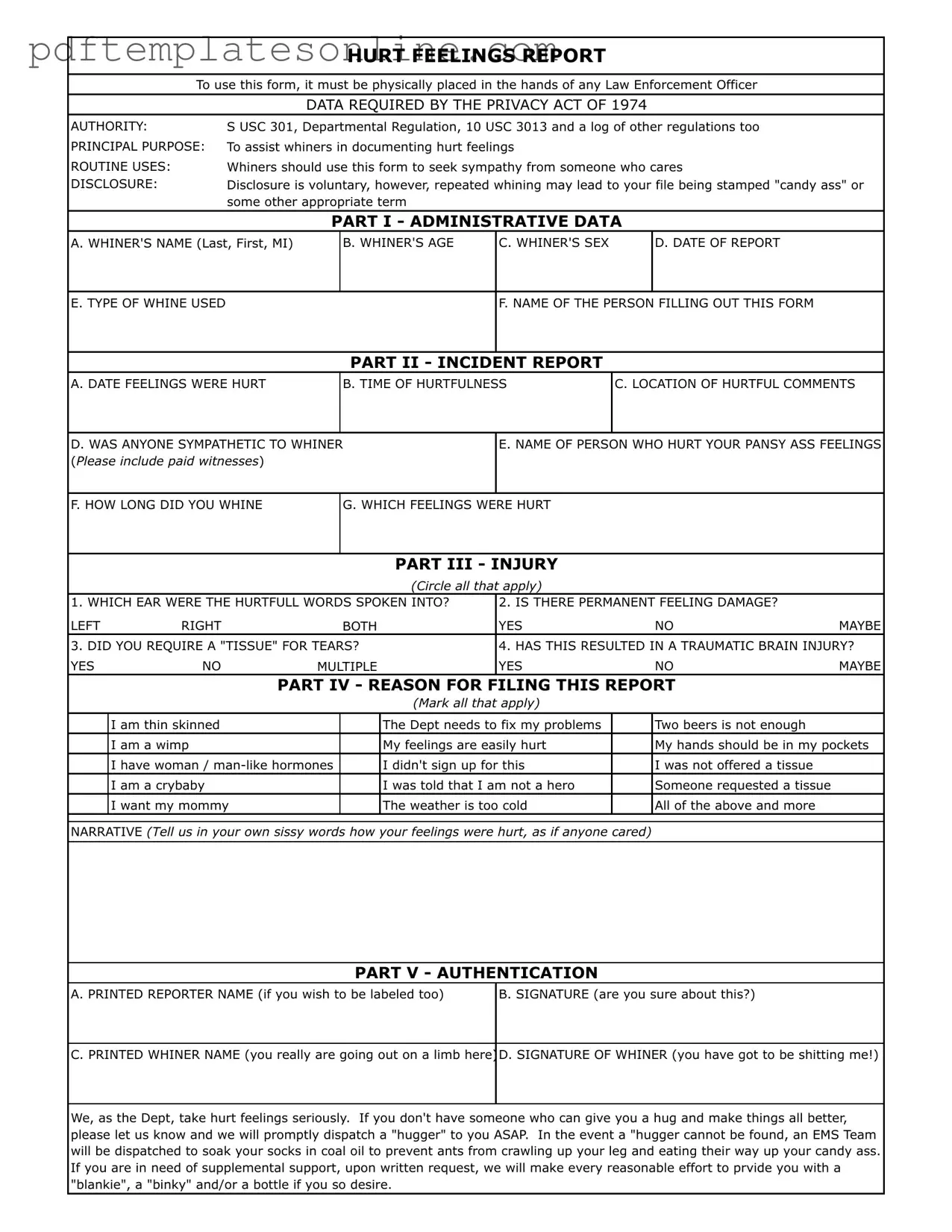Filling out the Hurt Feelings Report form can be a straightforward process, but many people make common mistakes that can hinder their claims. One frequent error is failing to provide complete personal information. The form requires the whiner's name, age, and sex, but some individuals leave these sections blank or provide incorrect details. This omission can delay the processing of the report and may lead to confusion later on.
Another mistake occurs in the incident report section. Individuals often neglect to specify the exact date and time when their feelings were hurt. This lack of detail can make it difficult for law enforcement officers to understand the context of the complaint. Additionally, some people forget to mention the location of the hurtful comments, which is crucial for establishing the circumstances surrounding the incident.
Many whiners also struggle with articulating their feelings in the narrative section. Instead of clearly explaining how they were hurt, they may use vague language or fail to provide specific examples. A well-crafted narrative can significantly enhance the report's impact, so it is essential to take the time to express feelings accurately and thoroughly.
In part III of the form, the injury section often leads to confusion. Some individuals mistakenly circle options that do not apply to their situation, such as indicating permanent feeling damage when they might not have experienced anything that severe. This can complicate the assessment of their claims and lead to misunderstandings about the severity of their feelings.
Moreover, the reason for filing the report can be a source of errors. Many people check multiple boxes without considering whether all reasons truly apply to their situation. This can dilute the effectiveness of the report, making it harder for the reviewing officer to gauge the seriousness of the complaint.
Lastly, some whiners overlook the authentication section, failing to provide their signature or printed name. This omission can render the report invalid. It is crucial to ensure that all required signatures are included to avoid any issues with the acceptance of the report.
